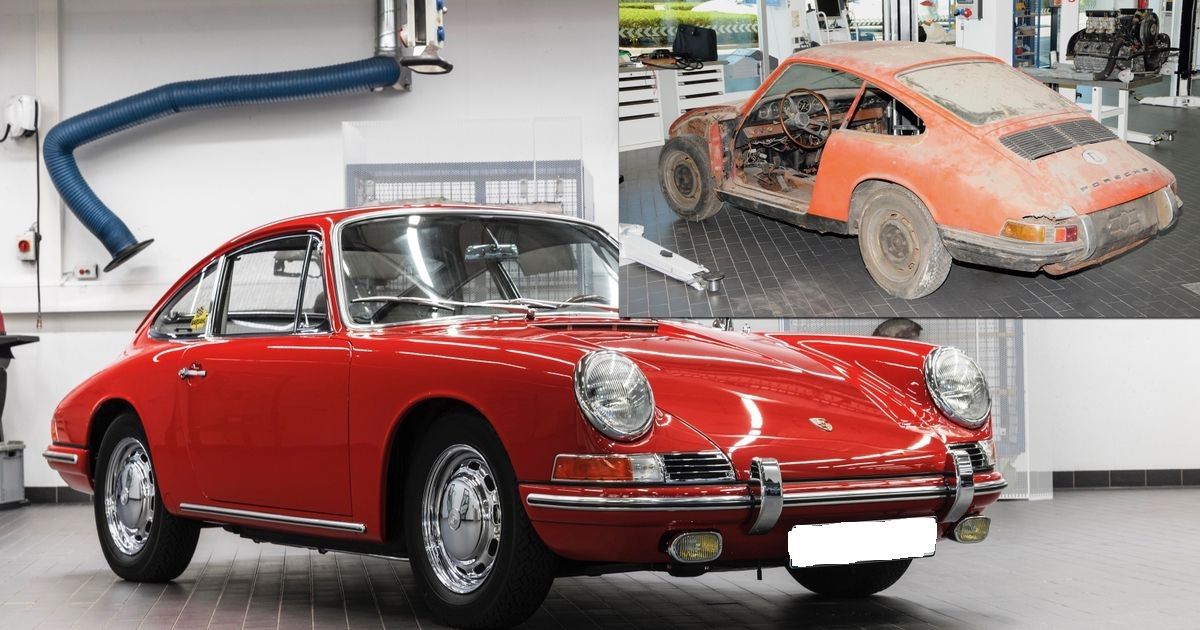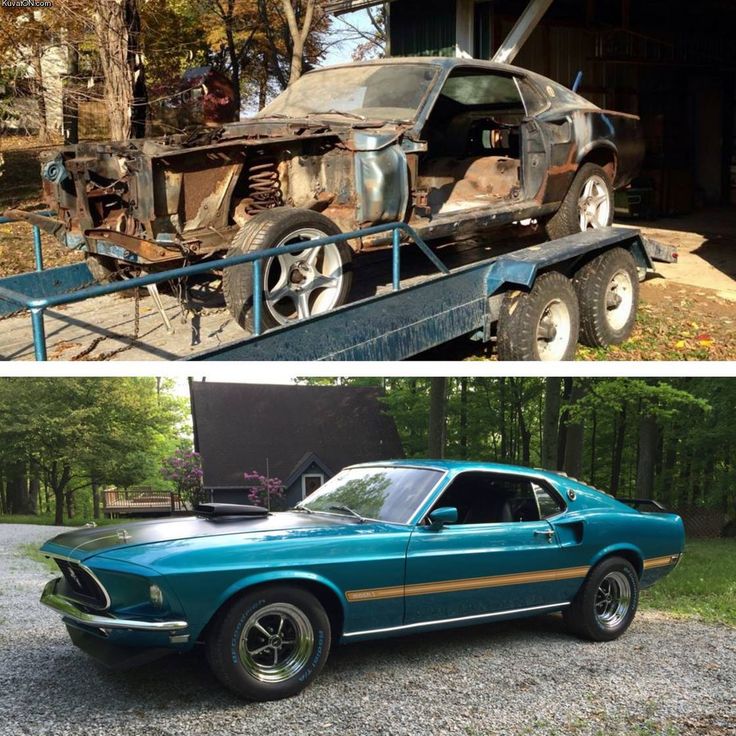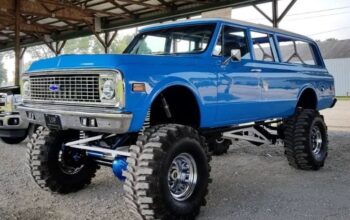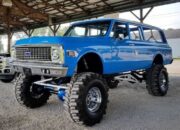In an age dominated by rapid technological advancement and the relentless pursuit of the new, there’s a powerful counter-current gaining immense momentum: the enduring, passionate world of classic vehicle restoration. Far from being a niche hobby, the restoration of vintage automobiles, motorcycles, and even commercial vehicles has surged in popularity, captivating a diverse global audience of enthusiasts, investors, and even casual admirers. This article delves deep into the multifaceted reasons behind this flourishing trend, exploring the intricate processes involved, the communities that sustain it, the economic ripple effects, and the future outlook for preserving these cherished pieces of automotive history.
The Irresistible Charm of Automotive Heritage
Why, in an era of electric cars, autonomous driving, and hyper-connected vehicles, do so many people gravitate towards machines from a bygone era? The appeal of classic restorations is layered, touching on nostalgia, craftsmanship, investment potential, and a tangible connection to history.
A. Nostalgia and Emotional Connection
For many, a classic vehicle isn’t just a car; it’s a time machine. It evokes memories of youth, simpler times, or perhaps a beloved family member’s prized possession. Driving or even simply seeing a restored classic can trigger powerful feelings of nostalgia, transporting individuals back to a different era. This emotional resonance is a primary driver for many enthusiasts who seek to recapture a piece of their past or experience a slice of history firsthand. The distinct sounds, smells, and tactile feedback of an older machine offer a sensory experience entirely distinct from modern vehicles, fostering a deeper, more visceral connection.
B. Appreciating Craftsmanship and Engineering
Older vehicles, particularly those from the mid-20th century, often represent a different philosophy of design and engineering. Before the widespread adoption of robotics and computer-aided design, much of a vehicle’s character was shaped by the hands of skilled artisans and the ingenuity of human engineers. Restorations celebrate this craftsmanship:
- Hand-built Details: Many classic cars feature intricate details, hand-formed body panels, and meticulously assembled components that are rare in today’s mass production.
- Mechanical Simplicity (Relative): While complex in their own right, the mechanical systems of many classics are often more accessible and understandable than the heavily computerized systems of modern cars, appealing to those who enjoy hands-on work.
- Durability: Many older vehicles were over-engineered, built to last with robust materials, which makes them prime candidates for restoration.
C. Investment Potential
Beyond passion, classic vehicles have increasingly proven to be a savvy investment. Over the past few decades, many rare and desirable models have significantly appreciated in value, often outperforming traditional financial assets. Factors contributing to this investment appeal include:
- Rarity: Limited production numbers make certain models highly sought after.
- Historical Significance: Vehicles with a unique racing pedigree, iconic design, or association with significant historical events command higher values.
- Market Demand: A growing global community of collectors, combined with increasing wealth, fuels demand for top-tier classics.
- Tangible Asset: Unlike stocks or digital assets, a classic car is a tangible item that can be enjoyed and showcased, adding to its appeal as an investment. However, it’s crucial to note that like any investment, values can fluctuate, and significant capital and expertise are often required.
D. The Thrill of the Hunt and the Build
The restoration journey itself is a significant part of the appeal. It begins with the “hunt” – finding a suitable project car, often a dilapidated shell or a forgotten barn find. The “build” then becomes a rewarding process of discovery, problem-solving, and meticulous work, often involving:
- Research: Digging into original factory specifications, historical documents, and community knowledge to ensure authenticity.
- Disassembly and Assessment: Carefully taking apart the vehicle piece by piece, documenting everything, and assessing the extent of damage or wear.
- Fabrication and Repair: Often requiring specialized skills in metalwork, welding, and bodywork to restore integrity.
- Assembly: Painstakingly putting everything back together, ensuring every component functions as intended.
This hands-on engagement fosters a deep sense of accomplishment and pride in the finished product.
E. Environmental and Sustainability Aspect
While perhaps counterintuitive, there’s an emerging argument for restoration as a form of sustainability. Instead of producing new vehicles and contributing to the carbon footprint of manufacturing, restoration involves:
- Reusing Existing Materials: Giving new life to old metal, glass, and components rather than sending them to landfills.
- Reducing New Production: Every restored classic means one less new car being manufactured, saving on raw materials and energy.
- Longevity: A well-restored classic, properly maintained, can last for many more decades, offering a sustainable alternative to the cycle of disposable consumer goods.
The Intricate Process of Restoration: A Labor of Love
Classic vehicle restoration is far from a simple repair job. It’s a painstaking, multi-disciplinary process that often takes hundreds, if not thousands, of hours and requires specialized skills and dedication.
A. Initial Assessment and Planning
Every restoration begins with a thorough evaluation of the project vehicle. This involves:
- Condition Analysis: Assessing the extent of rust, structural damage, mechanical wear, and missing components. This determines the feasibility and estimated cost of the project.
- Authenticity Research: Consulting factory manuals, historical photos, and expert resources to understand the vehicle’s original specifications, colors, materials, and options. This is crucial for achieving a historically accurate restoration.
- Budgeting and Timeline: Establishing a realistic financial plan and timeline, acknowledging that both are often subject to unforeseen challenges and expenses.
B. Disassembly and Documentation
The vehicle is systematically disassembled, often down to its bare frame. Meticulous documentation is paramount at this stage:
- Photography: Taking countless photos of every component and connection before, during, and after removal.
- Labeling and Bagging: Carefully labeling and bagging every bolt, nut, wire, and small part to ensure correct reassembly.
- Categorization: Organizing components by system (engine, transmission, suspension, interior, body) to facilitate the next steps.
This thorough documentation is vital for a smooth reassembly process and often helps in troubleshooting.
C. Body and Chassis Restoration
This is often the most time-consuming and labor-intensive part of the restoration, as it addresses the core structure and aesthetics:
- Rust Removal: Sandblasting, chemical dips, or media blasting are used to strip away old paint, rust, and filler, revealing the bare metal.
- Metal Fabrication and Repair: Rust holes are cut out, and new metal panels are either fabricated by hand, sourced as new old stock (NOS), or replicated using specialized tools. This requires high levels of welding and shaping skill.
- Body Straightening and Alignment: The body panels are meticulously straightened, filled (with minimal body filler), and aligned to ensure perfect gaps and a smooth surface.
- Paint Preparation: Multiple layers of primer are applied, sanded, and block-sanded to achieve a perfectly flat and smooth surface ready for paint.
- Painting: Applying multiple coats of base coat, clear coat, and sometimes specialized finishes to match the original factory color or a custom hue, followed by extensive wet-sanding and polishing for a deep, mirror-like finish.
D. Mechanical Systems Rebuilding
Every mechanical system of the vehicle undergoes a complete overhaul to ensure reliability and performance:
- Engine Rebuild: Disassembling the engine, inspecting every component (crankshaft, pistons, camshaft, cylinder heads), machining as necessary, and replacing worn parts (bearings, seals, gaskets).
- Transmission and Drivetrain: Rebuilding or replacing components of the transmission, differential, driveshafts, and axles.
- Suspension and Steering: Overhauling shock absorbers, springs, bushings, control arms, and steering components to restore original handling characteristics.
- Braking System: Replacing brake lines, calipers, drums, master cylinders, and all related components to ensure modern braking performance.
- Fuel System: Cleaning or replacing fuel tanks, lines, pumps, carburetors, or fuel injection components.
- Cooling System: Overhauling radiators, water pumps, hoses, and thermostats to prevent overheating.
E. Electrical System and Wiring
Older vehicles often suffer from deteriorated wiring, which can be a fire hazard and cause electrical malfunctions.
- Wiring Harness Replacement: Installing entirely new, often custom-made, wiring harnesses that precisely match the original specifications.
- Component Testing: Restoring or replacing generators/alternators, starters, lights, gauges, and other electrical components.
- Integration: Ensuring all electrical systems function correctly and safely.
F. Interior Restoration
The interior is crucial for both aesthetics and comfort:
- Upholstery: Reupholstering seats, door panels, and headliners with period-correct materials (leather, vinyl, fabric) and patterns.
- Dashboard and Gauges: Restoring or replacing cracked dashboards, repairing or refurbishing gauges, and ensuring all controls function.
- Carpet and Trim: Installing new carpets, restoring wood trim, chrome accents, and other interior details.
- Sound Deadening: Adding modern sound deadening materials to improve cabin comfort without altering the original look.
G. Chrome and Trim Restoration
Many classic vehicles feature extensive chrome trim, which requires specialized care:
- Re-chroming: Stripping old chrome, repairing imperfections in the metal, and applying new layers of copper, nickel, and chrome.
- Polishing: Meticulously polishing stainless steel and aluminum trim pieces.
- Replacing Missing Parts: Sourcing or fabricating any missing exterior trim.
H. Final Assembly and Detailing
The culmination of the project involves carefully reassembling all restored components. This stage requires immense patience and precision. Once assembled, the vehicle undergoes extensive detailing, including polishing, waxing, and meticulous cleaning, to achieve a show-quality finish. Road testing and fine-tuning are also critical to ensure everything operates perfectly before delivery.
The Vibrant Community and Ecosystem of Restoration
The classic vehicle restoration boom is fueled and sustained by a global network of dedicated individuals, specialized businesses, and supportive organizations.
A. Enthusiast Clubs and Forums
At the heart of the community are countless clubs dedicated to specific makes, models, or eras of classic vehicles. These clubs provide:
- Knowledge Sharing: Forums and meetings allow members to share technical advice, problem-solving tips, and restoration experiences.
- Parts Sourcing: Members often help each other locate rare or hard-to-find parts.
- Social Connections: Events, rallies, and car shows foster friendships and a sense of belonging among like-minded individuals.
Online forums and social media groups have amplified this connectivity, creating vast digital archives of knowledge and enabling global collaboration.
B. Specialized Restoration Shops
For those without the time, skills, or inclination for a full DIY restoration, a thriving industry of professional restoration shops exists. These shops:
- Employ Master Craftsmen: Many boast highly skilled technicians specializing in metal fabrication, engine building, paint, and upholstery.
- Offer Turnkey Solutions: From barn find to concourse-quality restoration, these shops manage the entire process.
- Focus on Niche Markets: Some shops specialize in specific marques (e.g., only vintage Porsches) or types of restoration (e.g., concours, restomod).
C. Parts Suppliers and Fabricators
The demand for original and reproduction parts has created a massive industry:
- New Old Stock (NOS): Unused original factory parts, often rare and highly valuable.
- Reproduction Parts: Companies manufacture new parts to original specifications, sometimes improving upon them with modern materials or manufacturing techniques.
- Custom Fabrication: Skilled fabricators can create bespoke parts that are no longer available or were never produced.
This extensive network ensures that restorers can find almost any component needed, or have it made.
D. Classic Car Shows and Auctions
These events are the public face of the restoration world:
- Concourse Events: Like Pebble Beach Concours d’Elegance, these shows emphasize originality, historical accuracy, and meticulous restoration quality.
- Enthusiast Meets: Less formal gatherings where owners showcase their vehicles, share stories, and connect with fellow enthusiasts.
- Auctions: Major auction houses (e.g., Mecum, Barrett-Jackson, RM Sotheby’s) facilitate the sale of high-value restored classics, often setting market benchmarks and attracting significant media attention.
These events provide platforms for display, commerce, and celebration, further fueling interest in restoration.
E. Media and Content Creation
Magazines, television shows, YouTube channels, and podcasts dedicated to classic car restoration provide entertainment, education, and inspiration. They feature restoration projects, expert interviews, and historical insights, drawing new enthusiasts into the fold and deepening the knowledge of existing ones. This content plays a crucial role in maintaining public interest and awareness.
Economic Impact and Investment Dynamics
The classic vehicle restoration market isn’t just about passion; it’s a significant economic force with unique investment dynamics.
A. Multi-Billion Dollar Industry
Globally, the classic car market, including sales, parts, services, and associated industries, is estimated to be worth tens of billions of dollars annually. Restoration services and parts constitute a substantial portion of this. This generates employment in skilled trades, manufacturing, logistics, and retail.
B. Skilled Labor Demand
The intricate nature of restoration creates a high demand for skilled labor: master mechanics, metal fabricators, painters, upholsterers, and auto electricians. This provides opportunities for craftsmanship and keeps traditional skills alive in an increasingly automated world. Training programs and apprenticeships are vital to ensure a steady supply of these specialized talents.
C. Value Appreciation and Market Volatility
While many classics appreciate in value, it’s crucial to understand the nuances:
- “Blue Chip” Classics: Rare, historically significant, or highly desirable models from iconic marques (Ferrari, Porsche, Mercedes-Benz, specific American muscle cars) tend to hold and increase their value most consistently. These are often the focus of professional, high-end restorations.
- Emerging Classics: Vehicles that were once overlooked (e.g., certain 1980s and 90s Japanese sports cars) are now becoming highly sought after, offering potentially higher returns for early investors.
- Condition is King: The quality of a restoration is paramount. A poorly restored vehicle can significantly detract from its value, while a concourse-quality restoration can fetch premium prices.
- Market Cycles: Like any asset class, the classic car market can experience cycles of boom and bust. Economic conditions, collector tastes, and generational shifts can all influence values.
D. Ancillary Industries Benefiting
Beyond direct restoration services, many other industries benefit:
- Specialized Logistics: Companies that transport high-value classic vehicles globally.
- Insurance: Specialized insurance policies for classic and restored vehicles.
- Financing: Banks and financial institutions offering loans for classic car purchases or restorations.
- Publications and Events: Supporting media, advertising, and the infrastructure for car shows and auctions.
Future Trends and Challenges for Classic Restorations
The world of classic vehicle restoration is dynamic, continually adapting to new technologies, environmental concerns, and evolving tastes.
A. “Restomod” Popularity
While purist restorations aim for historical accuracy, “restomod” (restoration + modern modification) is a growing trend. This involves:
- Classic Aesthetics, Modern Performance: Maintaining the original look and feel of the classic car but incorporating modern components like powerful engines (including EV drivetrains), advanced suspension, modern brakes, air conditioning, and contemporary infotainment systems.
- Enhanced Driveability: Making classic cars more practical, comfortable, and reliable for daily driving or longer trips.
- Increased Safety: Integrating modern safety features without overtly compromising the vintage aesthetic.
Restomods offer the best of both worlds and are expanding the appeal of classics to a wider audience.
B. Electric Conversions (EV Restomods)
A particularly exciting and somewhat controversial subset of restomodding is the electric vehicle (EV) conversion. This involves:
- Replacing ICE with Electric Drivetrain: Removing the original internal combustion engine and replacing it with an electric motor, battery pack, and associated power electronics.
- Zero Emissions: Offering a sustainable way to enjoy a classic vehicle, often making it exempt from emission regulations in certain cities.
- Instant Torque: EVs provide exhilarating acceleration and a smooth, quiet driving experience.
While purists may object, EV conversions ensure that classics can remain relevant and drivable in a future where gasoline might be scarce or restricted.
C. Digital Tools and Resources
The continued advancement of digital tools will further streamline restorations:
- 3D Scanning: Precisely capturing the dimensions of damaged or missing parts for accurate reproduction.
- Virtual Reality (VR) and Augmented Reality (AR): Assisting with planning, visualizing modifications, and even training for complex assembly.
- Online Databases: More comprehensive digital archives of factory specifications, repair manuals, and parts diagrams.
D. Challenges: Regulations and Parts Scarcity
Despite the growth, the industry faces challenges:
- Emissions Regulations: Increasingly stringent environmental laws in many regions can make it difficult to register or drive older, highly polluting classics without significant modifications.
- Parts Scarcity: While the aftermarket is strong, some very rare models or obscure parts remain incredibly difficult to source, driving up restoration costs and complexity.
- Skilled Labor Shortage: As mentioned, the demand for highly specialized craftsmen often outstrips supply, which can lead to longer wait times and higher labor costs.
Conclusion
The phenomenon of “Classic Restorations Gain Popularity” is more than just a fleeting trend; it’s a testament to the enduring human fascination with beauty, engineering, and history. It’s a vibrant ecosystem where passion intertwines with profit, where skilled craftsmanship meets cutting-edge technology, and where individual expression takes center stage. From the meticulous pursuit of historical accuracy to the innovative fusion of vintage charm with modern performance in “restomods” and EV conversions, the world of classic vehicle restoration is continuously evolving.
As modern vehicles become increasingly disposable, the act of preserving and revitalizing these automotive legends takes on even greater significance. It’s a commitment to sustainability, a celebration of artistry, and a tangible link to our past. Whether driven by nostalgia, investment potential, or simply the sheer joy of creating something beautiful and functional, the journey of restoring a classic vehicle is a profound and rewarding one. The global boom in this specialized field ensures that these rolling pieces of history will continue to grace our roads and captivate future generations, their roar and gleaming chrome serving as a powerful reminder of automotive heritage.









